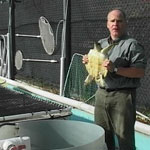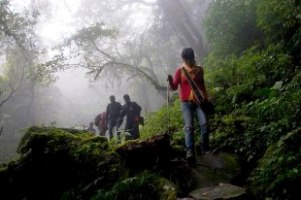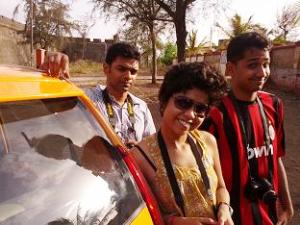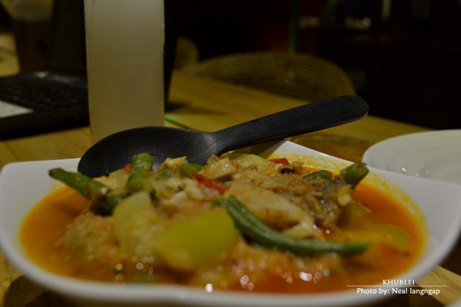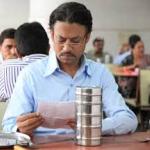Kashmir has a strange significance in my life. I have just heard about Kashmir and seen it through films and photographs. I heard about it more like a tourist location. Most prominent is that Kashmir is about the analogy that is drawn to the paradise on earth. Kashmir is indeed a treat to the eyes for tourists enthralled by the natural exuberance. It is mostly a place for honeymooners and that is how I was introduced to Kashmir. My parents had visited Kashmir during the late 70s to spend their honeymoon there. They tell me stories of an artist whom they met on the way from Chandigarh and some Iranian people who gave them lift to reach Srinagar when their bus broke down. I also faintly remember about some apple orchard which my parents happened to visit during their stay and the Shalimar Bagh where they posed for photos in black and white.
It is almost the Hindi films of the 60-70s in Bollywood where ‘Kashmir ki kali’ was famous. Parents had also shared about the Dal Lake with the Shikaras in it and how they had the exquisite glimpses of Kashmir. Later whenever we talked about Kashmir, it was a land of mysterious silence, bloodshed and fearful existence. Nobody even fancied to go to Kashmir for even work during the Kargil war and henceforth. As I grew up, memories of Kashmir again got fresh with some of the Hindi films like ‘Mission Kashmir’ and ‘I Am’. Even during my years of education in Delhi, Kashmiri food in Dilli Haat was a great delight. Somehow there was nostalgia around Kashmir. My work made me meet a Kashmiri lady from Jammu in Chandigarh when I had gone to attend some meeting on Health issues. It was the first time I had met someone from Kashmir in person. Later Kashmir was in the limelight for critical concerns of conflict and the India- Pakistan friction.
When I worked with the media, Kashmir was always in the headlines. Even the stories on Kashmir in the feature pages were very popular amongst a Pan-Indian readership. Somehow Kashmir and its enigmatic existence in my life took another turn when I attended an Art lecture by Nikhil Chopra when he defined his work done in the context of Kashmir. Nikhil Chopra is a performance artist who painted and performed simultaneously on the streets of different cities of India and the world and particularly in Srinagar at the Lal Chowk. He shared how people were restricted and body-searched when they came to view his artwork in the heart of Srinagar at the Lal Chowk area. During my stint with the media, I used to make pages for a features page and my job was to look for relevant photographs to go with the story which will be published.
Whenever there was a story from Kashmir, it was on conflict and I had to find pictures which had barbed wires, rugged looking Kashmiri youth and some sort of symbolic representation of Kashmir which depicted the grave realities of war in Kashmir. Kashmir was a place to be included when there was an issue of human rights and excluded when there is no talk of human rights. Kashmir was of prime importance yet was least considered for anything to do with technological advancement, business or sports issues in the newspaper. Media really moulds Kashmir and its issues according to its own market demands and clientele. Kashmir features when people protest, when bombs explode and when curfew affects everyone in the valley. But when it comes to stories of common people their triumphs, trials and tribulations, somehow Kashmir seems to be barren of human existence.
In my experience of visiting Kashmir in the month of March, on official purpose I was enlightened. A few of my students were placed with the University of Kashmir and with a local voluntary organisation called Chinar Kashmir. My visit was scheduled during an indefinite curfew. Before reaching Kashmir, I was cautioned by my students that everything was closed due to curfew. They were suddenly caught in the whirlpool of curfew, protest and uncertainty completely collapsing their plans for fieldwork in the community areas of Srinagar. Since there was an indefinite curfew, I was prepared to stay back at the airport for three days and get back as my tickets were done accordingly. I had no idea where I will be after reaching Srinagar as all phone contacts were out of reach. But fortunately or unfortunately, I just got a confirmation before boarding the flight that there will be someone from Chinar Kashmir to pick me up. With a sigh of relief, I was happy that the curfew was lifted for the time being. As soon as I landed in Kashmir, I was enthralled by the white blossoms of the cherry trees in the roadside. Finally I reached the land of turmoil in one piece.
I stayed at the children’s home of Chinar Kashmir with six young girls in a dormitory accommodation. Chinar home was a children’s home for young children in the age group of 6 to 18 years who have limited access to quality education in their native places. There were 15 children who have had very traumatic childhood due to dire consequences of poverty, acute illness of family members and also due to loss of family in the conflict situation of Kashmir. The children came from some of the most remote corners of different districts of Kashmir. They are staying at this home for more than five years now. Their food, stay and studies are taken care of by many well-wishers and individual professionals who regard Chinar Kashmir’s work immensely. The children go to English medium schools and even get home tutors to learn better.
Most of the boys play cricket during their free time and the girls read, share stories, help with the daily chores of the home during their free time. All the girls follow the strictures of socio-cultural norms very diligently. They offer namaz, cover their heads with hijab and maintain decorum in the home. The boys also go to the mosque for their namaz. They do not even wear slippers inside the rooms as it’s a crime to wear any footwear inside the rooms even though it was biting cold inside the home. All the children read newspapers and books and watch little bit of television during their leisure time. The children used to watch cricket matches with great interest. They simply adored the way some of the Pakistani and Indian players played and made these players their role models.
One interesting thing was the presence of a periodic table with the chemistry formulas in the walls of the girl’s dormitory. Some of the girls wanted to be doctors, teachers and even nurses. They had great ideas of understanding the world through their perspectives. They were very curious about where I came from and wanted to know about different parts of the world. When I tried playing a group game with the children, some very interesting insights emerged. The game was meant to make the children enact some themes without talking. Groups of three were made from either boys or girls. None of the boys were in the girl’s team and none of the girls were in the boys’ team. I coined simple themes like tree, house and bus etc. Some of the themes were youth and hope. The boys got the youth theme which they executed beautifully with a depiction of youth playing a guitar, giving slogans and reading something with actions. When it came to hope, the girls’ team just could not depict anything and then I changed hope theme to pain. This time the girls did not hesitate to show pain through their actions. In the wider context, this is the reflection of the society in Kashmir. It is pain and acute sense of distress which grips the society. The grief and pain is not only for the bloodshed and the mayhem which has crippled the Kashmiri society but also for the mistrust which is perceived by fellow citizens on each and every Kashmiri and framing them as a breeder of divisive politics.
After meeting some of the families of children who are supported by Chinar Kashmir through remote sponsorship programme, I realized that communities living in the margins had the same eventualities to deal with. One family was struggling with acute poverty due to kidney failure of the man of the house; another family cannot support their children’s education as they are daily wage labourers. The third family struggles to survive with difficult extended family as the father of three children died during a crossfire. These are issues which people are grappling with in any part of India where there is no active conflict. But the general world view is that people in Kashmir are suffering because they have called for it. Most of these common people in Kashmir want to live simple, secured and comfortable lives free from violence as a Kashmiri not as a Pakistani or as an Indian. In the battle of the mighty military of two nations, tombstones of common people are laid down in such a way that even people do not know when they got annihilated.
My perception of Kashmir was very different from what I had heard or seen through films and pictures. The buzzing of the markets around Lal Chowk after 3 days of curfew with traders, tourists and people getting their essentials not knowing when the next curfew will be slammed. People in general were very hospitable and welcoming. They just wanted to share their views that Kashmir is very different from the way media depicts it and it’s a place where not all Kashmiris are terrorists and not all are averse to technology, modern science and academic excellence.
When I walked around the Srinagar area with the children, I noticed that many girls were going for their tuitions and they aspired to clear the medical and engineering tests. Most of the girls were dropped by their family as well at the tuition centers. I did not see a Kashmir from a tourist perspective but had the opportunity to live the life of a Kashmiri for 3 days with sweet Kehwa, Kebab andGoshtaba. This was possible because of some wonderful people at the learning institutes like the University of Kashmir and Tata Institute of Social Sciences at Guwahati. I owe this experience to the students who braved the curfew for 25 days and worked very closely with Chinar Kashmir and I just went to supervise their work.
Find us on facebook: facebook.com/TheThumbPrintMag










